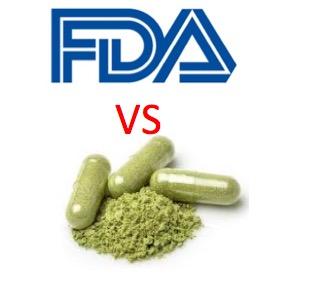
A new press announcement released by FDA commissioner Scott Gottlieb is going to hit a lot of nerves, many of which are already raw. The issue is actually two issues and they are both rife with controversy. First, is kratom, which is sold in supplement stores and head shops, an opioid? Second, if it is, then what should be done about its use.
I have written about the drug (actually a mixture of drugs), first to assert that kratom is a drug, not a dietary supplement, and should be regulated as such (1), and later, to modify my stance somewhat (2). Both of these articles are central to today's announcement, which is factually correct but maybe still wrong. Here's why.
Dr. Gottlieb's announcement made it quite clear that the FDA considers kratom to be an opioid drug; 22 actually. The science behind this determination is quite sound, but the interpretation is not so clear. Gottlieb cited that the 25 chemical compounds that are most prevalent in kratom (3), all had chemical structures similar to morphine. Using sophisticated 3-D molecular modeling, the FDA scientists predicted that 22 of the 25 were opioid agonists - drugs that activate opioid mu-receptors:
This is why the FDA developed the Public Health Assessment via Structural Evaluation (PHASE) methodology – a tool to help us simulate, using 3-D computer technology, how the chemical constituents of a substance (such as the compounds/alkaloids found in kratom) are structured at a molecular level, how they may behave inside the body, and how they can potentially affect the brain.
Scott Gottlieb, M.D., February 6, 2018 Press Release
Strengths
Molecular modeling, which has been a powerful tool in drug discovery research for more than two decades, is more powerful and sophisticated than ever. It enables scientists to "see" the interactions of a given drug with its target in three dimensions. I have little doubt that Gottlieb's statement was accurate; the structures of each drug were correctly identified and that the 22 opioids he cited do indeed bind to mu-opioid receptors in some capacity.
Weaknesses
- Molecular modeling is not infallible. When used in drug design it is not uncommon for the model to explain the activity of a molecule rather than predict it.
- The magnitude of the effect of any drug is dependent on its dose and binding affinity. Without knowing both, it is impossible to determine the pharmacological effect of a given drug. But, according to Gottlieb, one of these two parameters can be determined computationally:
We found that kratom has a strong bind to mu-opioid receptors, comparable to scheduled opioid drugs...The computational model also predicted that some of the kratom compounds may bind to the receptors in the brain that may contribute to stress responses that impact neurologic and cardiovascular function.
- Binding data determines how tightly a drug will "stick" to its target, but not whether it will ever arrive at it. Chemical compounds, including drugs, do not get a free ride to the blood, let alone the brain. No matter how potent any drug may be it can be 1) extensively metabolized, 2) not be absorbed, or 3) even if it reaches the blood may not reach the brain. It is trickier to predict these parameters
- Until binding data that determines cardiovascular or other effects, the statement about this is speculative.
Conclusion
There are strong data to support Gottlieb's assertion that kratom does contain drugs that are opioid agonists and it very likely that at least some of these will show opioid-like pharmacology. While all of some of the evidence is imperfect, on balance, it is strong.
Harm Reduction - The Wild Card
Although I am in agreement with the FDA's science, it does not exist in a vacuum. When determining the risk of using a drug or chemical it is essential to also consider the risk of not using it. This is why I "changed my mind" about kratom. Kratom did not change, but the situation did. The risk of not having kratom available, despite all its liabilities, may be greater than whatever harm the drug may cause.
This is, of course, due to anti-scientific and irrational state and federal policies that fail to recognize that pain patient addiction is rare, so the ongoing crackdown on opioid prescribing is going to do little more than harm pain patients, who will either suffer, or be forced turn to street heroin (which now means fentanyl), not for any addiction, but to make their lives manageable - as good an example of the consequences of an atrocious policy as you'll ever see.
The risks and possible benefits, if any, of kratom, are largely unknown. But the risk of fentanyl is very well known, as is the risk of living with intolerable pain. Thanks to our negligent CDC, (4) these are the choices that pain patients now face. Both are bad.
At this time the FDA is "right" but so are people who have no better alternatives and wish to try kratom. This war will go on for some time. Right now I'd suggest a cease-fire.
NOTES:
(1) Yes, Kratom Is A Drug: Here's Why
(2) I Was 'Wrong' About Kratom And Here's Why
(3) These are only the chemical compounds that have been isolated and identified. There could be dozens (or hundreds) more.
(4) See CDC Guideline for Prescribing Opioids for Chronic Pain, 2016.


